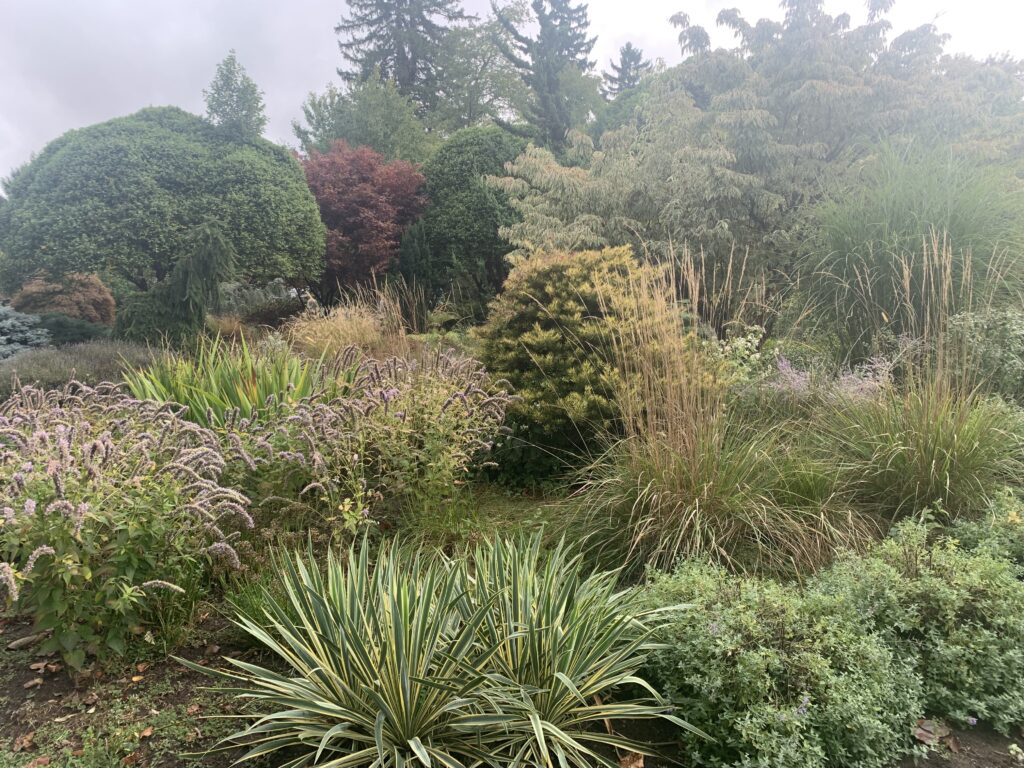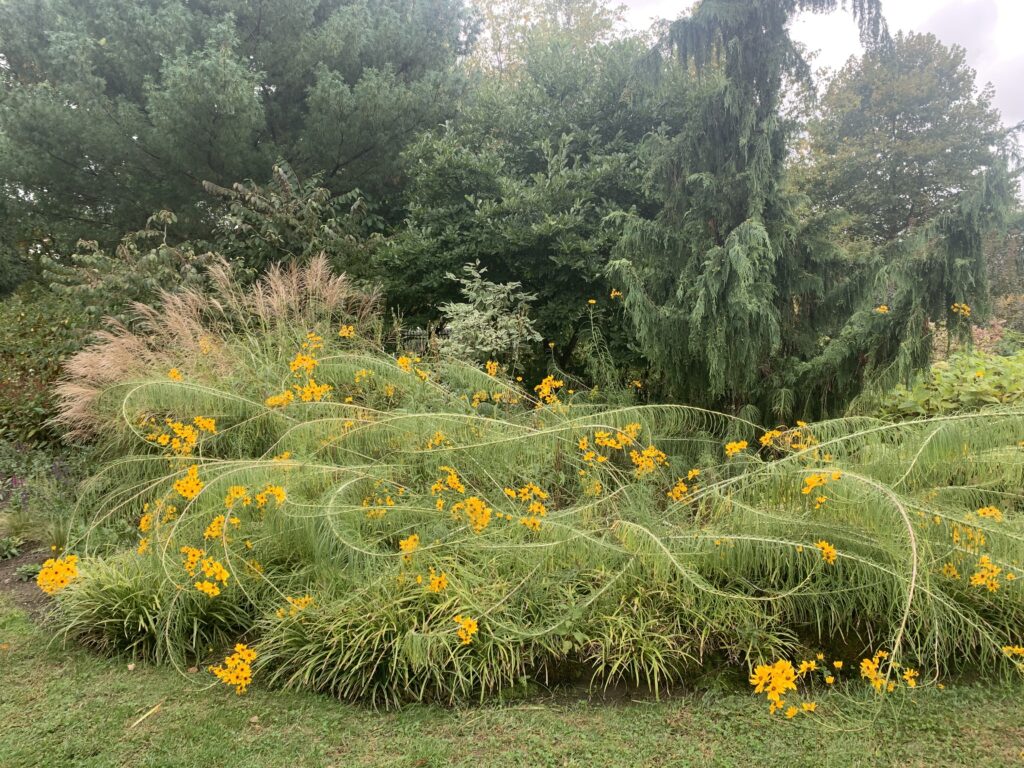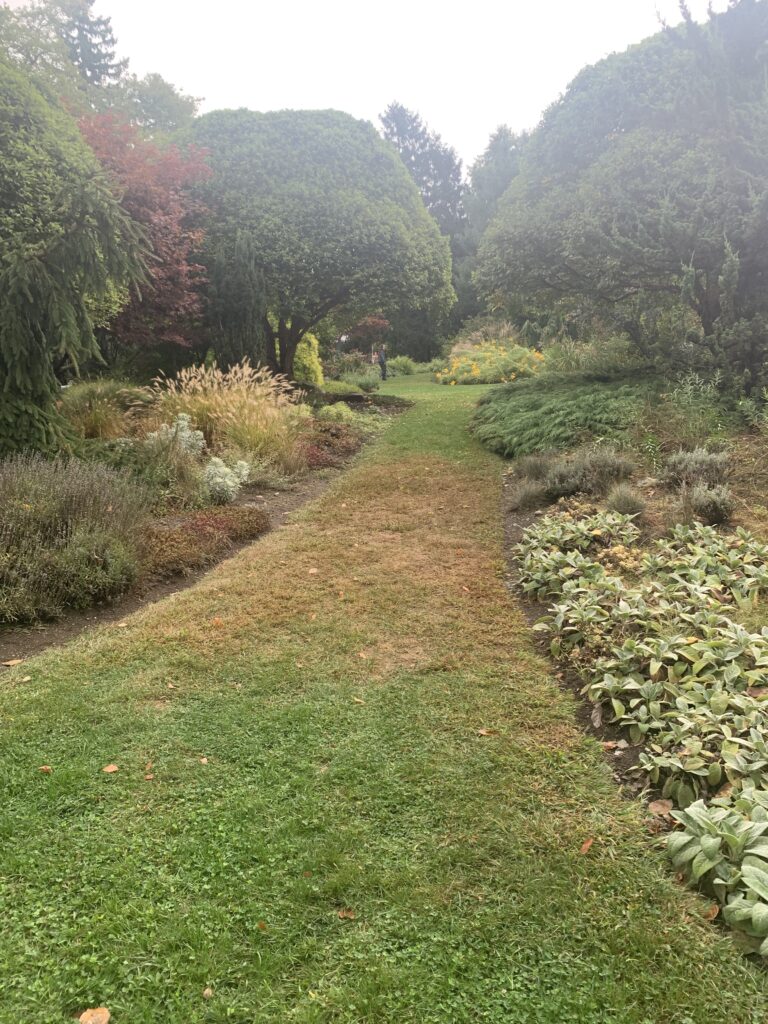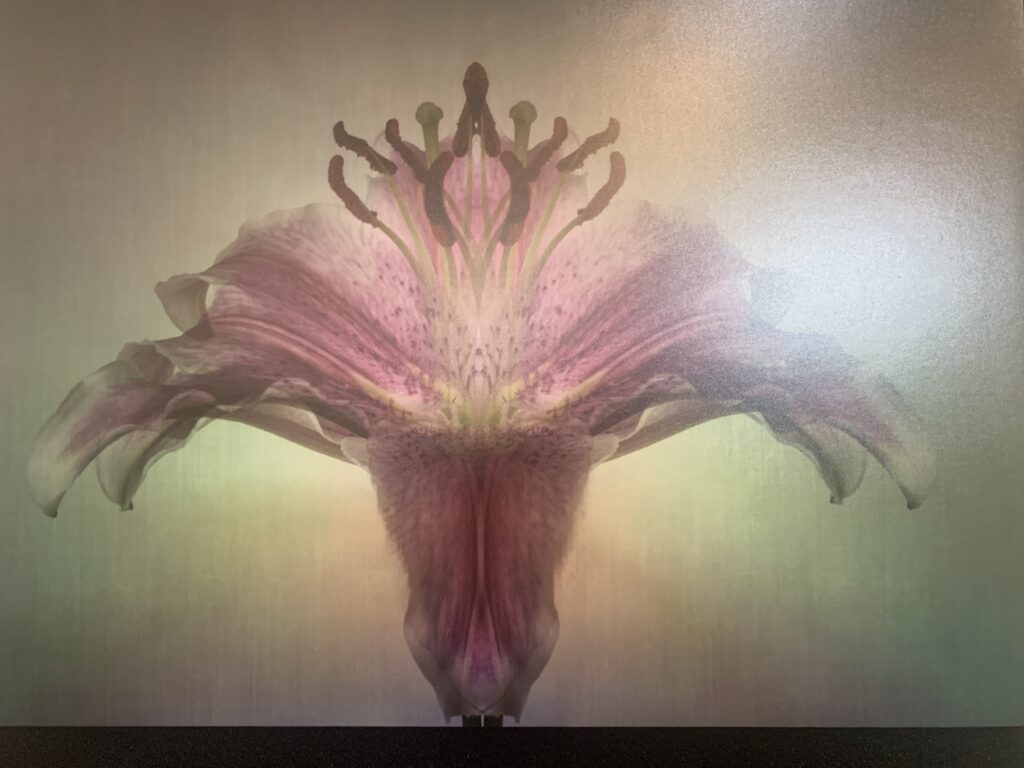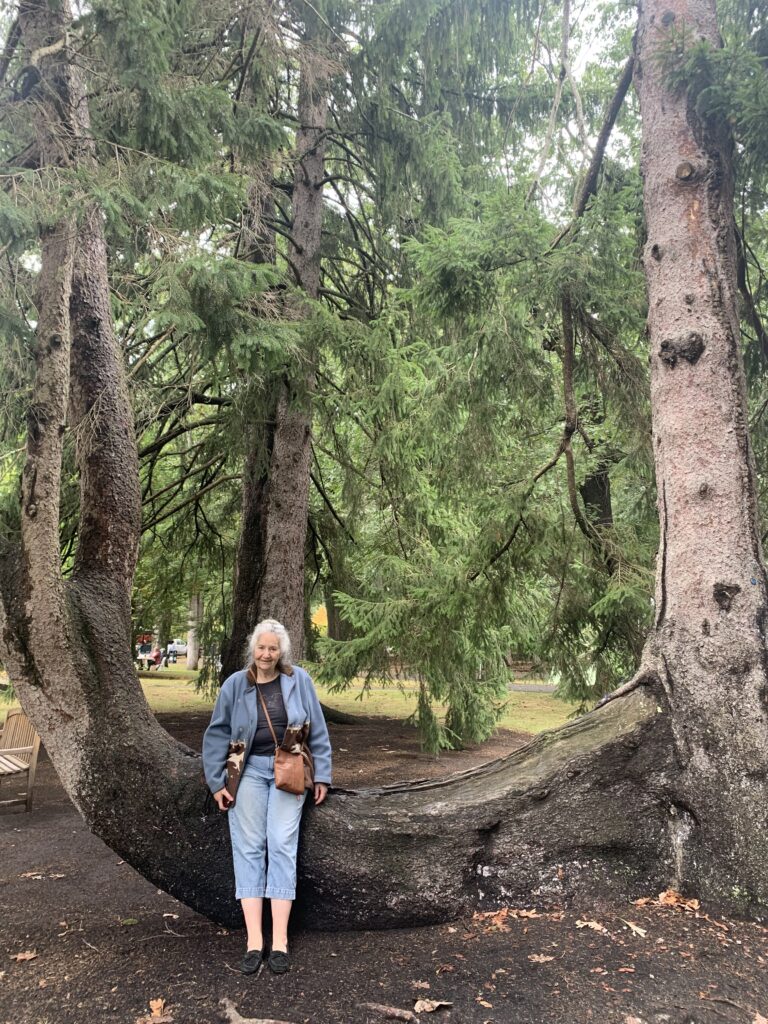Power of Flowers —
New England Fall Flower Show
Story by Karen Brockelbank
Photos by Karen Brockelbank and Bette Keva
The New England Fall Flower Show was held at The Garden at Elm Bank, the home of the Massachusetts Horticultural Society, on September 21 and 22, 2024. I went there as a representative of the Garden Club Federation of Massachusetts, reporting for their quarterly newsletter, The Mayflower. New to the world of garden clubs, and a neophyte when it comes to the appreciation of flowers, I only had a vague idea of what to expect. Flowers in vases? Surely. Experts pointing out details I never would notice? Absolutely. What I encountered was beyond my imagination, and an experience that I will never forget.
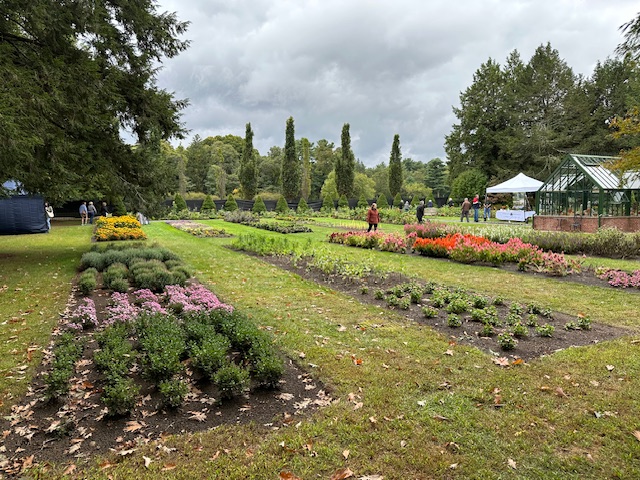 Upon entry to the main hall, I noticed the most exquisite miniature gardens. Tiny reproductions of outdoor landscapes had been recreated down to the most excruciating details, including a gazebo, a footbridge over a reflective pond, and a diminutive greenhouse. I paused for a moment to gawk before moving on.
Upon entry to the main hall, I noticed the most exquisite miniature gardens. Tiny reproductions of outdoor landscapes had been recreated down to the most excruciating details, including a gazebo, a footbridge over a reflective pond, and a diminutive greenhouse. I paused for a moment to gawk before moving on.

The “creative arrangement” categories were mounted on pedestals in the middle of the room. I was drawn to several large, unusual looking arrangements and noticed that the first prize winner had been awarded the prestigious Ruth A. Wallack Award, a prize I dimly remembered was highly coveted.
As I looked at the winning design by Meghan Harris, I read the judges’ comments, “The exciting combination of contrasting form, texture and color achieves a modern line mass design.” Indeed! Who would have thought to combine leaves of sansevieria with bamboo, and secure them to a scaffolding-like structure with a small bunch of pink and green flowers tied in the middle? I shook my head and marveled. It was stunning.
This was only the beginning. The “Harmonious and Haphazard” category was equally interesting, with arrangements that boasted a front and back design, like theatre masques (if you didn’t walk around the other side of them, you missed half the show.) The “Hale and Hartley” category were small arrangements mounted among dishware, glassware and other selected props like frames and linens. An interesting opportunity for creativity! Although all the entries were amazing, it was the third-place winner by Austin Seeley that caught my eye, with its bright yellow flowers. And even though the judges thought the placement of components on the left side “disturbed the balance”, to me the creativity was first-rate. Who would have known that flower shows could be this fun!
The “Hot and Humid” category showed off two different height arrangements of the same colors and flowers with an umbilical cord of sorts that connected them. This category was visually unusual (a woman next to me said of Rita Cutroni’s second place winning design, “It reminds me of Dr. Seuss!”) but the winning arrangement by Andrea Little was declared “a creative design of outstanding beauty” and “stands above the crowd with its artistic use of color harmonies, components and form” by the judges. I was beginning to understand that the wining artisans were creating sculpture (albeit temporary) using live plant material. What a specialized talent.
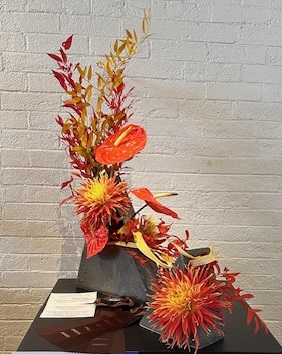
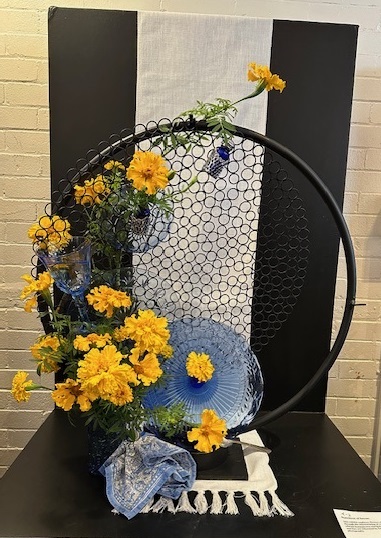
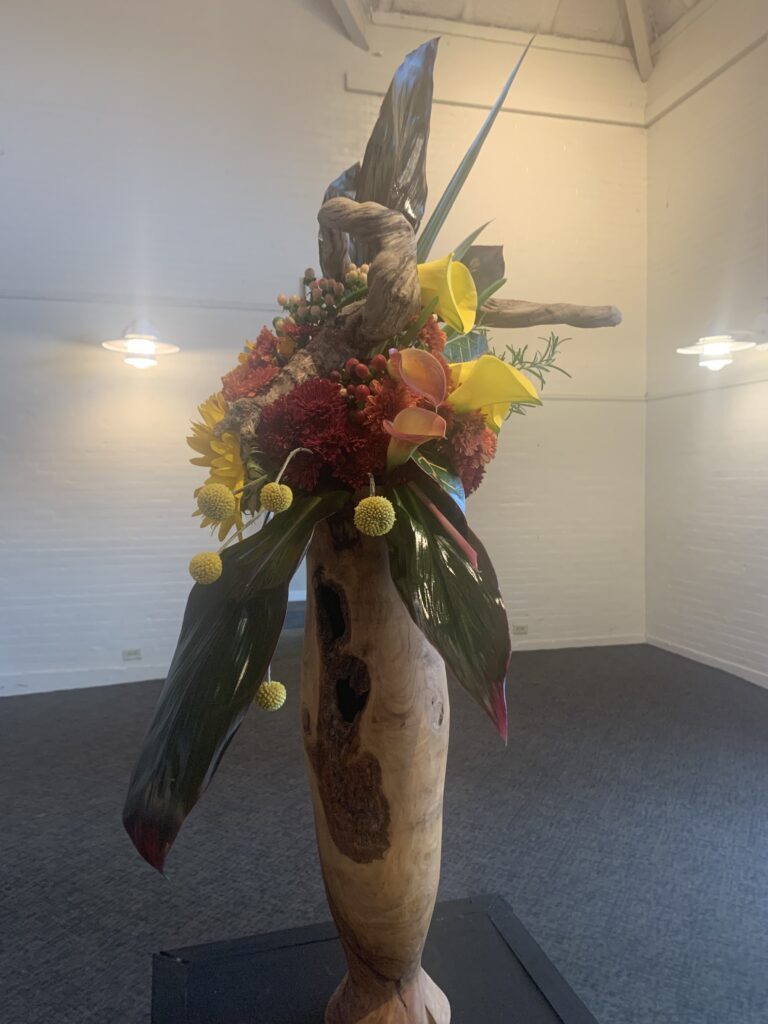
There were several different photography displays in the Educational category, and an entire tent for Amateur Horticulture where the age requirement was 18 or younger. As I departed to explore the gardens, I was impressed that there appeared to be something for everyone who wanted to enter the show, from expert arrangers to their children or grandchildren.
The Gardens at Elm Bank, a 36-acre estate, is the home of the Massachusetts Horticultural Society, which is the oldest formally organized horticultural institution in the United States. It has grown in size and been based in different locations since its beginning in 1829, but Elm Bank has been its home since 1996. Originally a private residence built in the 17th century, Elm Bank changed hands several times during the 20th century. It served as a seminary, a summer camp, and a technical school before being protected on the National Register of Historic Places in 1987, and finally becoming the home of the Massachusetts Horticultural Society who then pledged to bring Elm Bank back to life for generations to come.
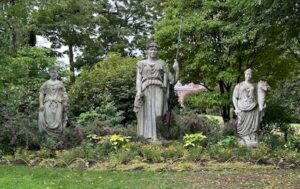
The main drag took me straight to three enormous Roman statues: Flora, Ceres and Pomona, whose gaze overlooks a beautiful green expanse surrounded by 100-year-old trees. Pathways wander diagonally over the grounds, crisscrossing the many gardens on the property. There is a formal Italian Garden, a Shade Garden, a Dahlia Garden, and a Labyrinth among other hideaways.
Naturally concerned with ecology, Elm Bank boasts a Teaching Herb Garden, a Seed to Table Vegetable Garden and a Pollinator Meadow. There was so much to see, it was like a small city filled with different gardens connected together. The staff were helpful and kind and spent time answering all my questions. At the end of the day, instead of feeling intimidated by my lack of knowledge, I only thirsted for more.
The Gardens at Elm Bank hosts the Fall Flower Festival next year and I intend to visit again, hopefully with a better understanding of all the Seussian award categories so that I may fully understand them. And a picnic on the grounds? Definitely. Pomona awaits.
